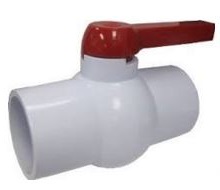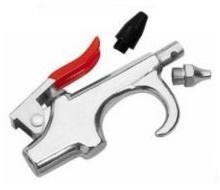
Air Cannon Plans "Build-it-Yourself"
- Air cannons are pneumatic toys, tools, or launchers that fire a projectile by means of suddenly releasing compressed air pressure from a high pressure chamber behind the projectile. In some cases, combustible gasses like hair spray or propane are also used to ignite and fire the projectile.
Definition: What is an Air Cannon?

![]()
![]()
- Many people launch potatoes, veggies, tennis balls, paint balls and the like for fun. Potato cannon spud guns happen to be one of the most popular uses. However, many scientific and practical purposes for air cannon launchers are also common.
Common Air Cannon Uses Include:
- Launching potatoes, tennis balls, water balloons, paintballs, t-shirts, marshmallows, toilet paper, confetti, etc.
- Pneumatic launchers can be a great science experiment to demonstrate the laws of projectile motion.
- Various research groups use air cannon launchers to test aircraft windshield strength and durability by simulating bird impacts.
- Pneumatic launchers are also often used for avalanche control to purposely trigger loose snow to fall creating a more safe environment.
- These launchers are also used for science impact experiments to simulate hurricane impacts by launching wood into houses to see how engineers can improve homes to withstand hurricanes, and save lives.
- Air cannons have also been used as compressed air devices for creating high pressure shock waves under water.
- Those on coastlines often use air cannons to launch bait attached to the line on their fishing rod for surf fishing.
- Stringing guide wires for antenna tower stability is also accomplished by firing a light line up to the antenna, then feeding a cable.
- Firing a tow rope from one boat to another, etc.
WARNING: No Liability Is Assumed By The Developers Of This Website and All Literature Is Provided Second Hand, Use It At Your Own Risk!
Feeling the pressure? Are you ready to build? Here on our website we offer FREE Air Cannon Plans that include homemade DIY instructions to build it yourself. They are available for many different projectile purposes. This includes personal and promotional use. Some of the more popular barrel sizes and projectile uses include:

- 1/2" marshmallow etc. air cannon plans
- 1/2"+3" paintball / bomb air cannon plans
- 1"-3" spud gun / potato launcher air cannon plans
- 2"+- universal golf, tennis ball, t-shirt, air cannons
- 2 1/2" tennis ball air cannons
- 3" tomato air cannon plans
- 3" t-shirt air cannon plans
- 3" water balloon air cannon plans
- 4" toilet paper air cannon plans
-
 nerf rocket air cannon plans
nerf rocket air cannon plans -
 confetti air cannon plans
confetti air cannon plans -
 and many more!!!
and many more!!!
Building an air cannon yourself can be a very simple project with the right set of air cannon plans to work from. We are compiling an ever growing resource for air cannon plans that you can use for selecting and building the air cannon of your choice. These plans are acquired second hand so always err on the side of caution.
Building An Air Cannon From A Set Of Plans
The most typical material used to build air cannons happens to be pvc plastic which in the right schedule, or thickness, will create a very sturdy and strong cannon that will enhance safety, and long term use.
However, in all cases, safety is a critical component of construction and use, so understanding air cannon technology along with the hazards of high pressure within the air cannons is an indispensable part of insuring that nobody gets hurt!!!
Pneumatic / Combustion Air Cannon Launchers
Pneumatic launcher construction can be a build it yourself project you can complete at home. A pneumatic compressed air or combustion launcher can vary from a paintball gun, to a pneumatic cannon capable of propelling a projectile hundreds of yards away.
Air Cannon Components Parts List
Common parts used to build an air cannon include:
- PVC pipe and fittings that are rated for pressure, generally
these should be marked schedule 40 for high pressure.
- ABS black schedule 40 pipe and fittings are also a good choice.
- A tire fill valve is the popular choice for adding pressure.
- An air pressure gauge rated to 100 psi or more will allow you to monitor the amount of pressure you put in your cannon.
- A
PVC Ball Valve for your trigger, or a low voltage sprinkler
valve is an even better choice for releasing the pressure from the
cannon quickly to propel your ammo toward your target.
- An Orbit sprinkler valve is a popular choice since it will be modified to open faster pneumatically with a blow gun.
- A 1/2" male-to-male compressor fitting and an air compressor blowgun (the kind used to blow dust off things) with a 1/2" opening.
Common tools that are used to fabricate and assemble your air cannon at home include:

- Hack saw or cutoff saw
- Drill and drill bits
- PVC or ABS primer and cement
- Screw drivers, wrenches, vice grips
- Thread tap for threading drilled holes
- Teflon tape to seal threaded fittings
- Epoxy for sprinkler valve modification
That's the common list of tools and components used to fabricate and assemble an air cannon.
You can easily build this type of air cannon at home since most of these tools are common standard repair tools found in most homes.
So there you have it... Check out our FREE Air Cannon Plans to decide what type of launcher you would like to build for fun and games.
Air cannons can be dangerous so be safe out there, and check on the legality of air guns and cannons in your area before proceeding.
Remember that high powered fast moving projectiles can do some serious damage, so playing safe is a precaution we all need to take when tinkering with high pressure air cannon devices.
Website Policies: Digital Goods and Refunds
Digital Goods: Download service fees are used for website expenses and development. Digital Goods may include a background watermark of our trademark domain name.
Digital Goods Delivery: After purchase you are redirected to the download page, and a download link is also sent to your email address registered with PayPal.
Refunds: Due to the fact that we have no control over the deletion of digital files from your device, Download Purchases for Digital Goods are Not Refundable.
We do NOT harvest, sell, or distribute purchaser data. Keep your purchase emails for reference as proof of purchase for support. Your receipt/invoice comes from PayPal.
To combat fraud, we have a system in place that records purchasers IP Address and download details. Fraudsters and scammer details will be reported to PayPal.


